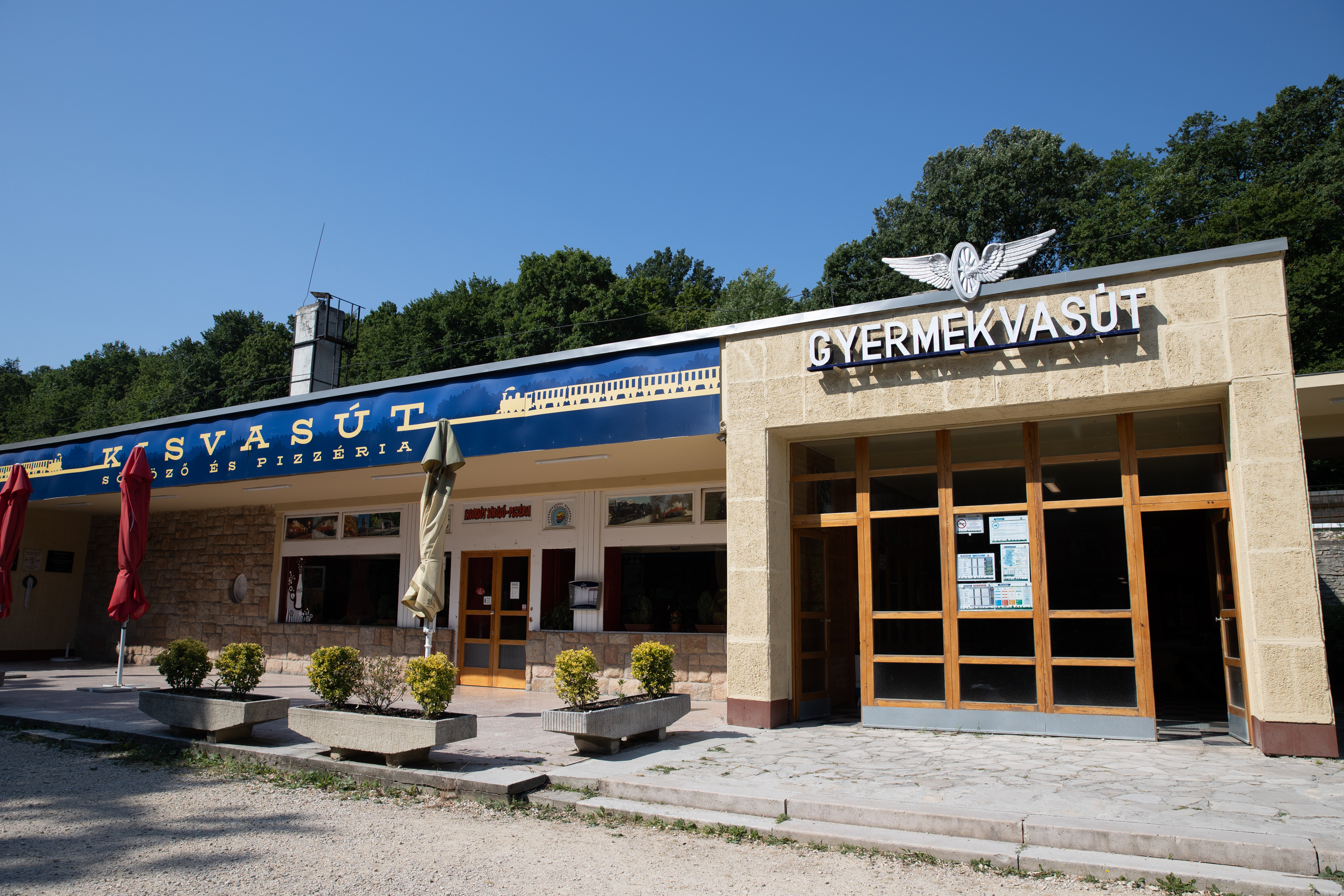In 1947, Hungarian railways decided to create a train ride for children. A suitably meandering route was chosen, through the beautiful Buda hills. From April 1948, work was carried out at such a clip that prominent publishing house Népszava produced a children’s book about the heroic deeds involved in the construction.
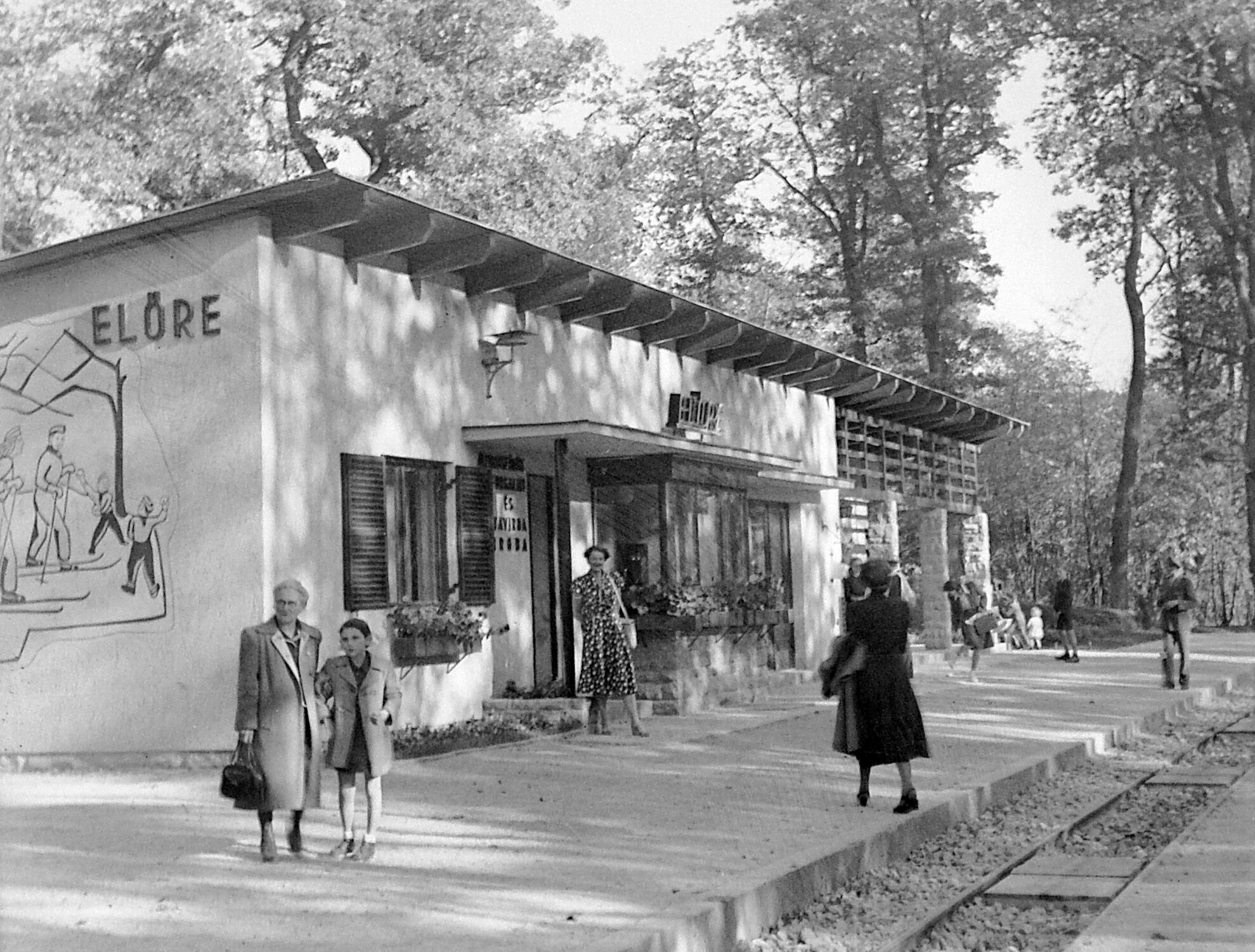
Unveiled section by section, the entire line was completed by 1951. The track is just over 11km long, the maximum speed is 20 km/h and the journey time is 45 minutes.
Although the project ran as the Children’s Railway at the start, by its completion, the Socialists were in power. It duly became the Pioneer Railway, like so many across the USSR and Eastern Bloc, the first opening in Moscow in 1932.
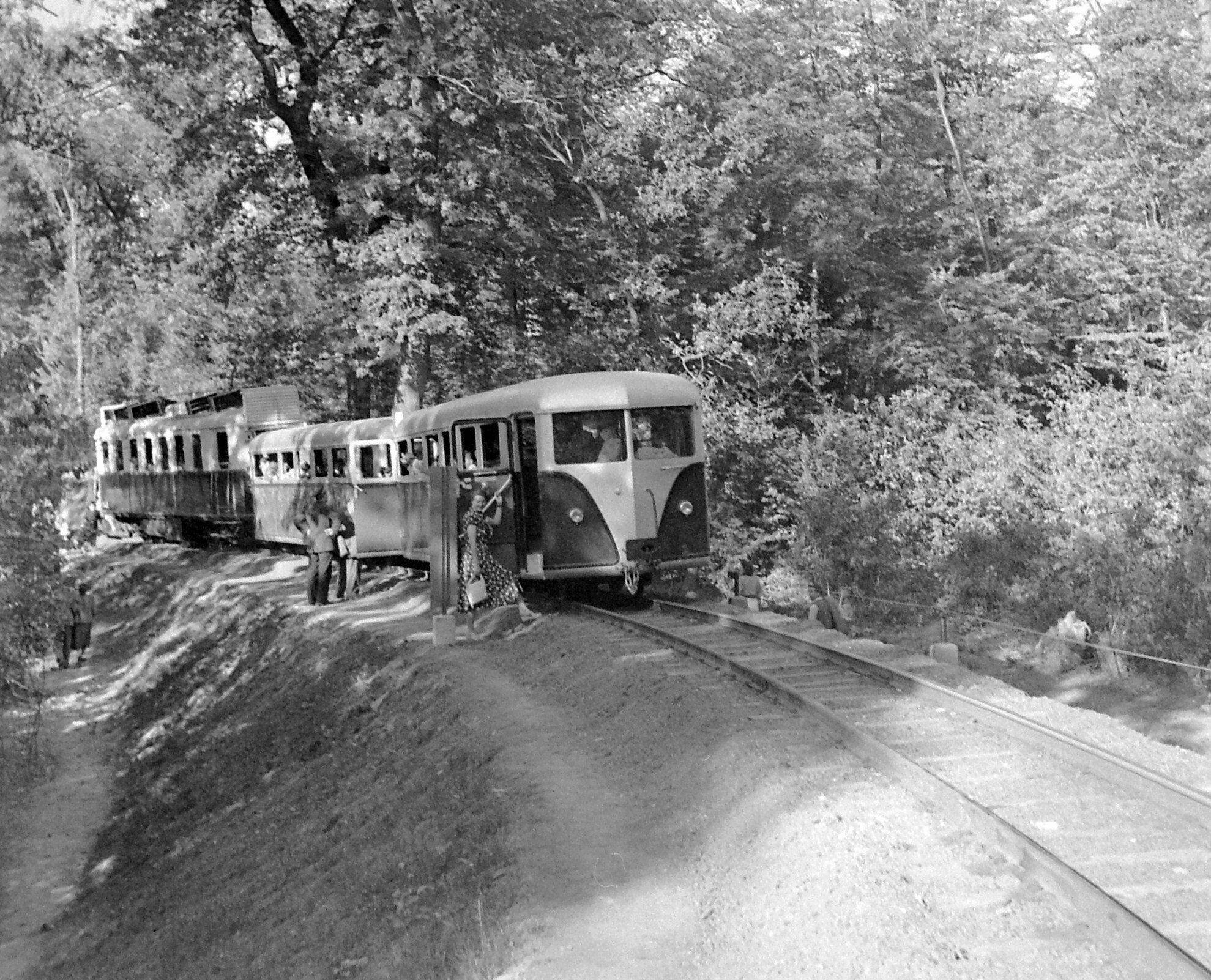
According to the official ideology, the purpose of the
Pioneer Railway was to educate children for a decent Socialist life, to show
them the beauty of creative and productive work. The system, of course, used double
standards: the logical reason would have been to help problem kids get back on
the right track – but they weren’t allowed to be involved.
Only distinguished pupils were hired to staff the train, and a single C- at school was
enough to call for a change of personnel. Despite the rigour, it was always
oversubscribed, yet somehow the children of the Party cadre always managed to
get in. This situation, and the name, changed when the régime did in 1989.
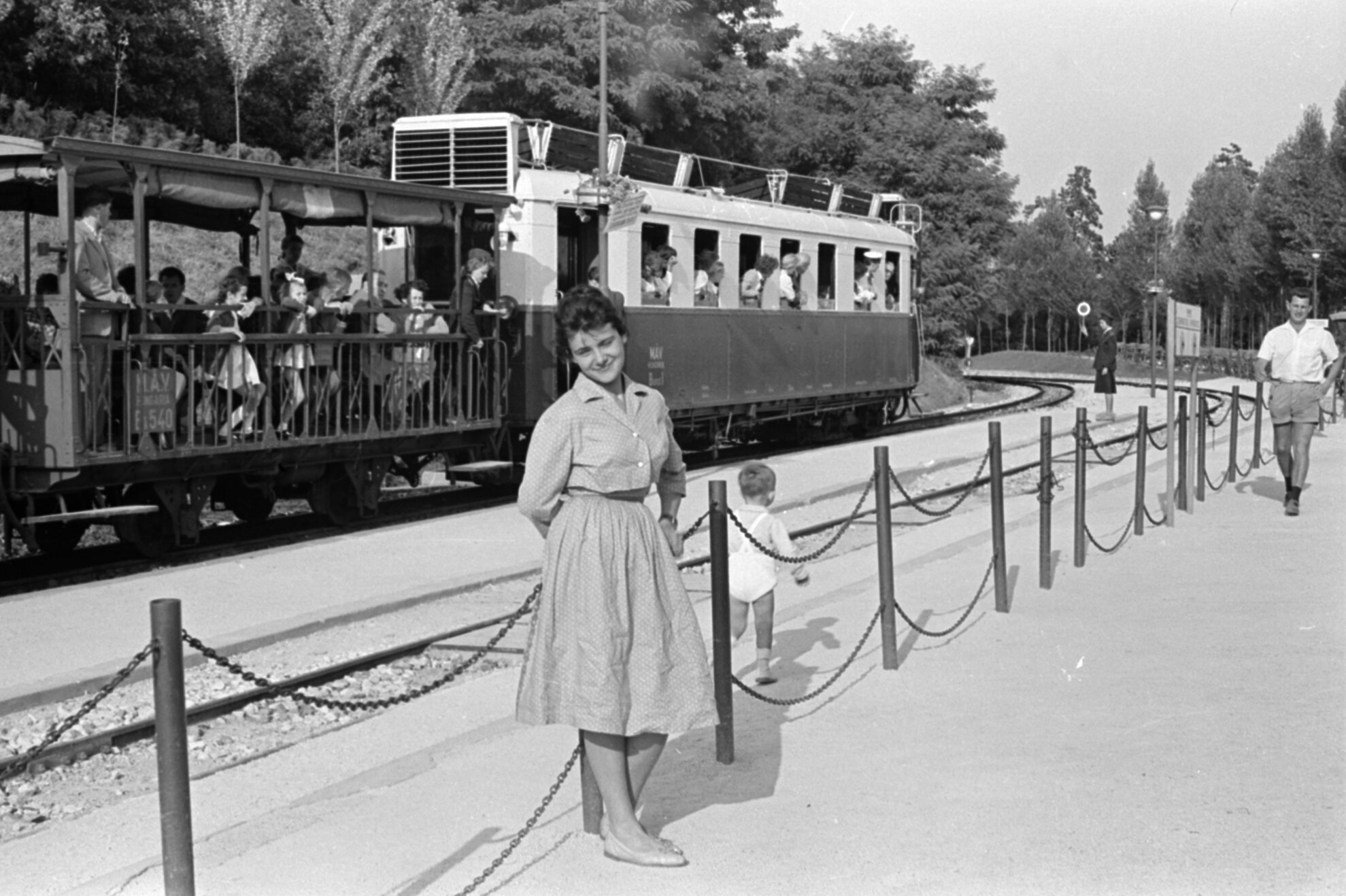
That was when Hungarian State Rail MÁV took it over from the Pioneers' Association. The station buildings, the track and the rolling stock had been kept in good condition, and were renovated here and there in due course. The most onerous was the reconstruction of the Hűvösvölgy terminus, the most northerly end of the line.
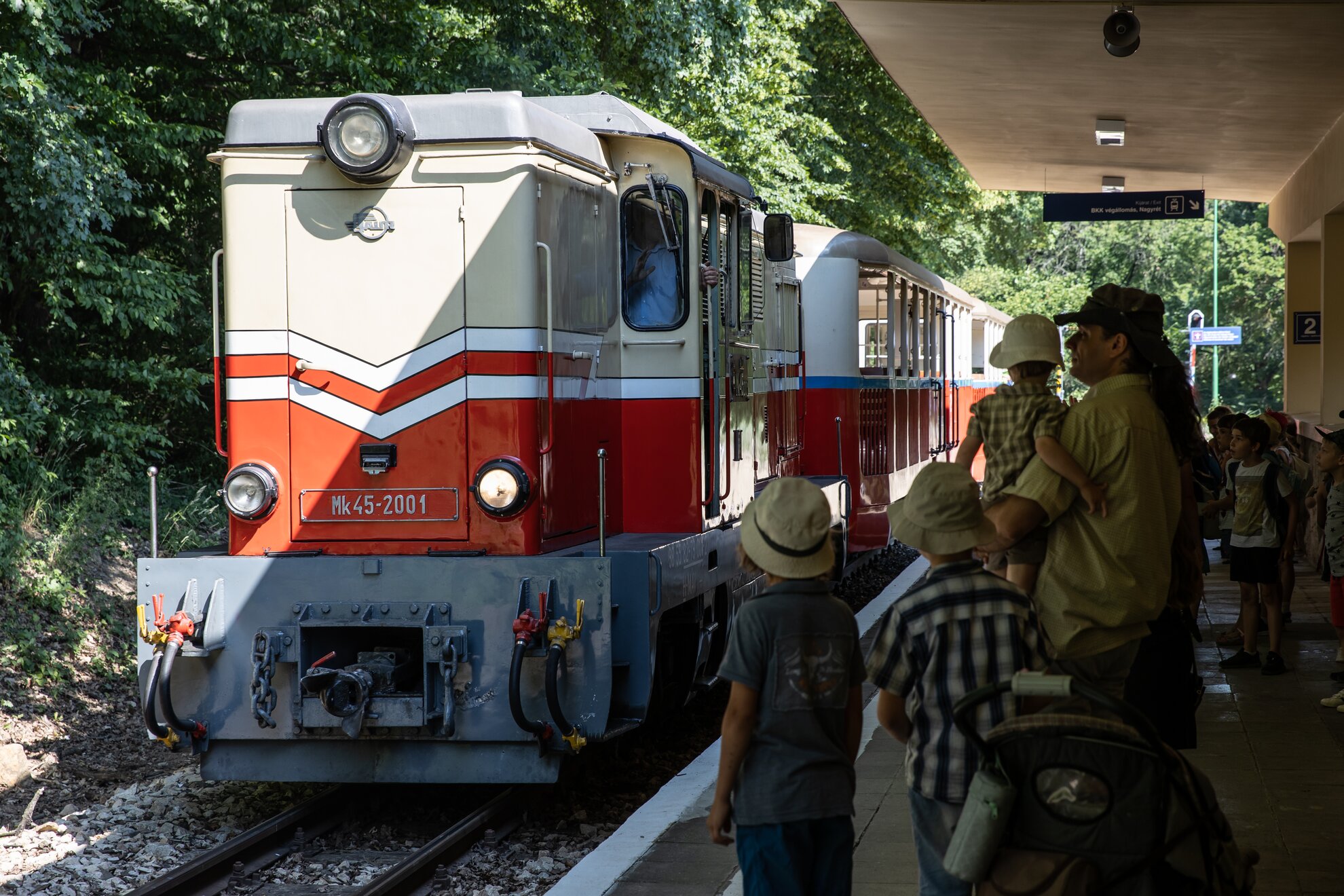
Its popularity remains unbroken, both for passengers and the 200 or so children who now work as ticket inspectors, brakemen, money handlers, announcers, platform attendants and cashiers. Children can apply from fourth grade (around ten years old) and service lasts until eighth grade (around 14), and the departing little railroaders are bid a fond farewell with a ceremony every August.
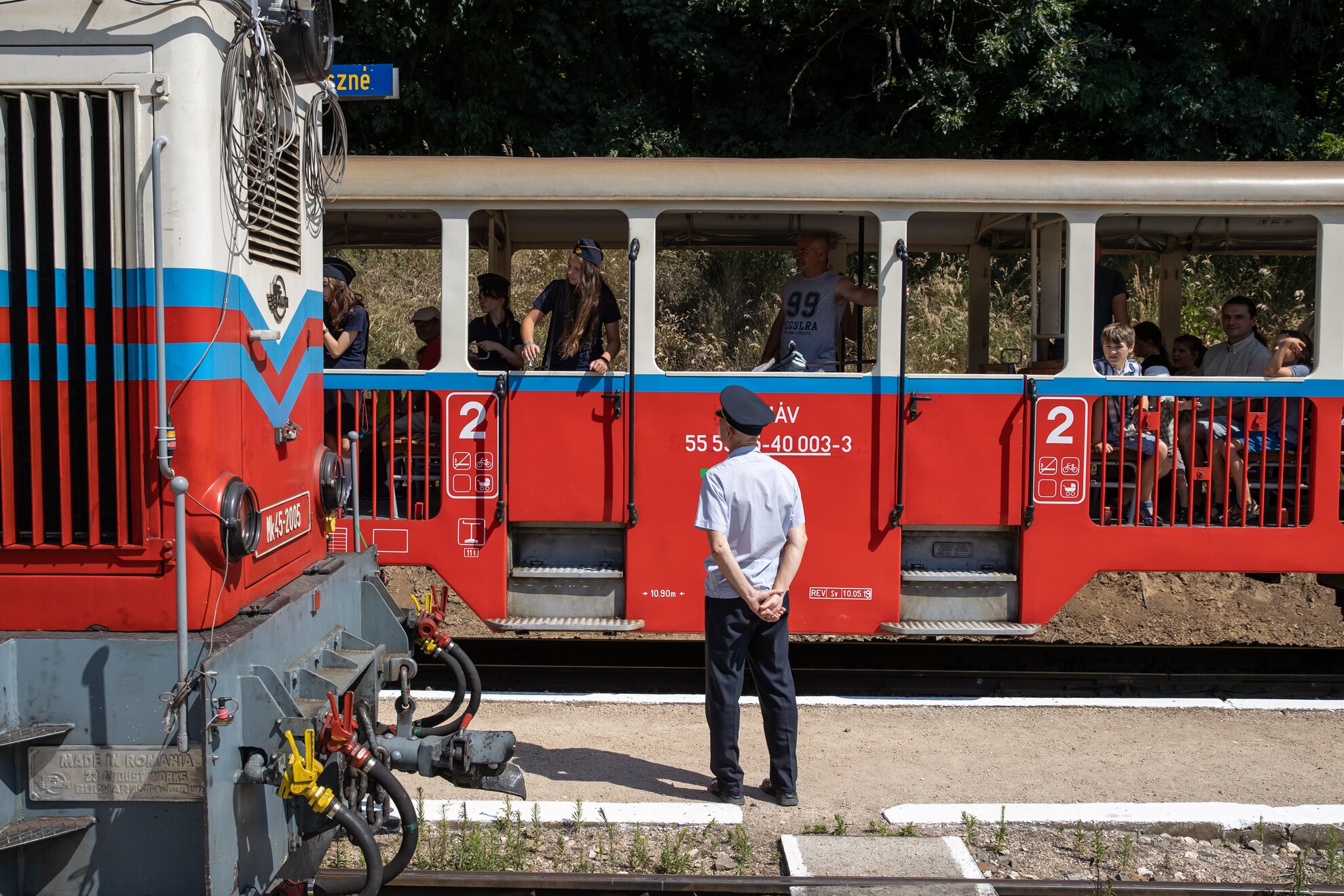
Although it’s fun to ride the entire length of the Children’s Railway, every station has its own nearby attractions. We stopped off at each one in turn to find out. See here for ticket information and here for schedule details in English.
Hűvösvölgy
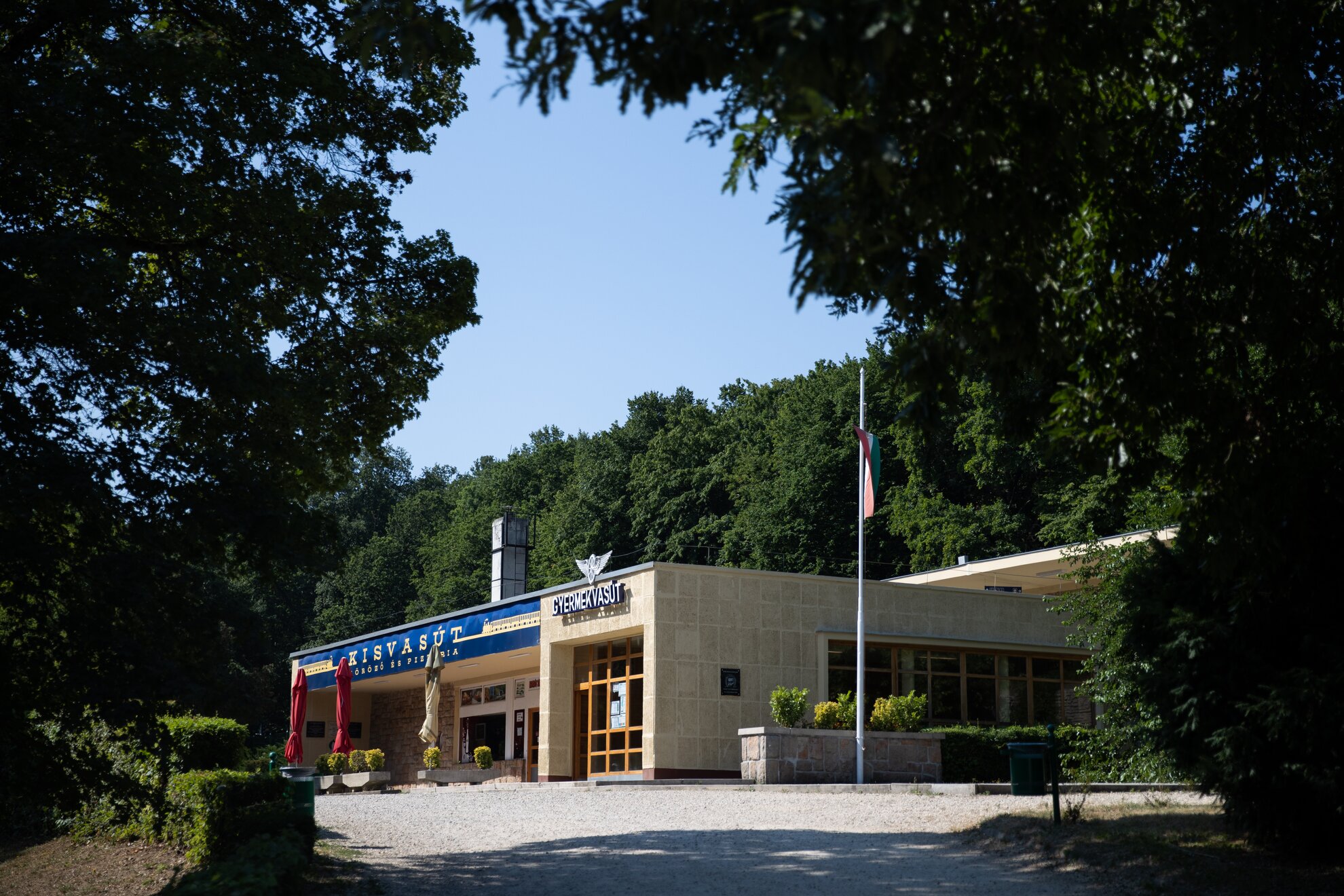
This is one of the terminals. Here you find the Children’s Railway Home and Camp, as well as the Children’s Railway Museum, illustrating the history of the service, located inside the station building.
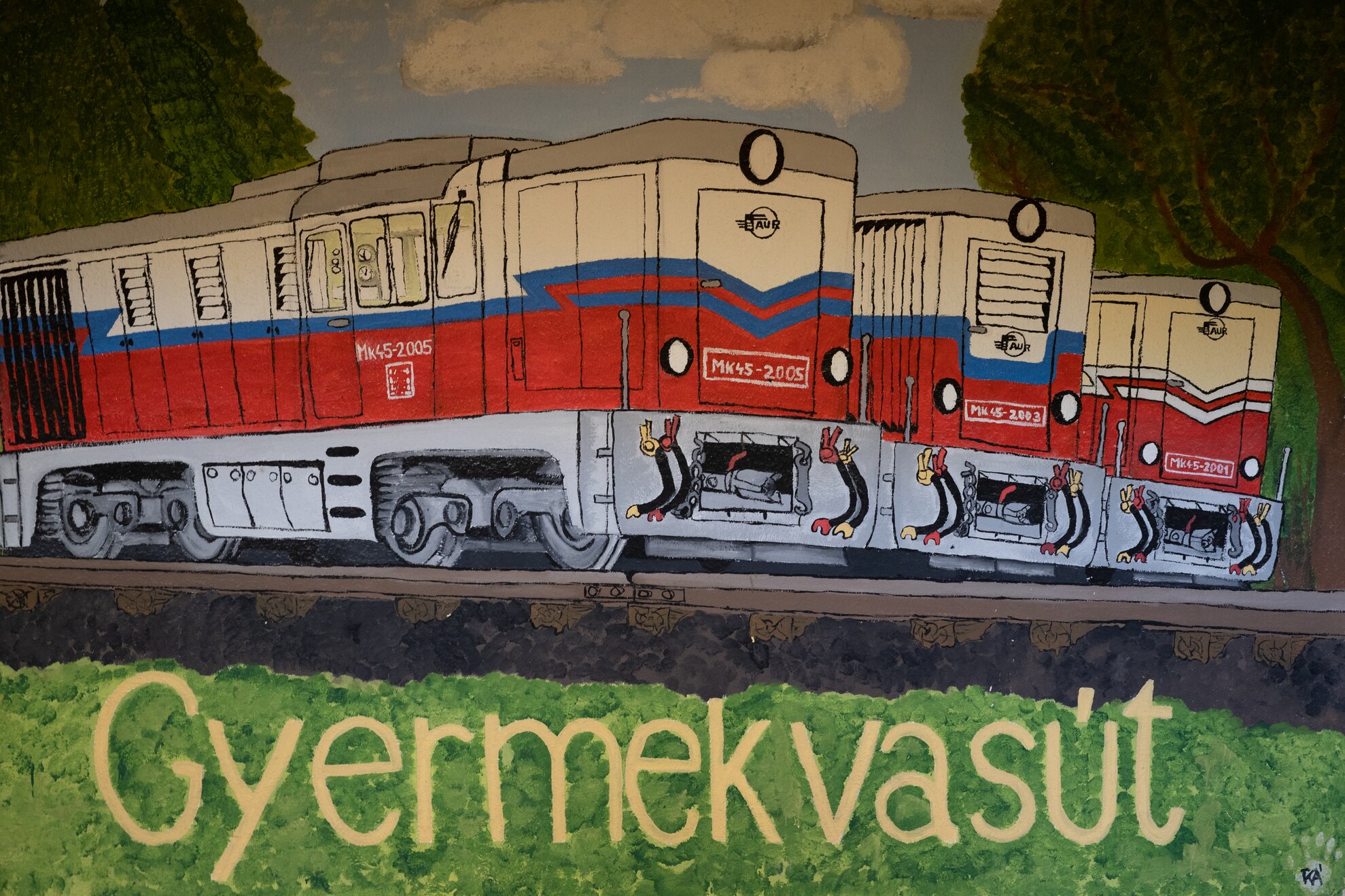
Hűvösvölgy itself is also a popular excursion destination, with plenty of attractions to head for. Starting right away with the pretty meadow of Nagyrét, a few minutes’ walk from the terminal through a woodland track, where a children’s playground and outdoor gym were installed this spring.
Near Hűvösvölgy is the former military guard post and shooting range, Fazekas Hill, at the foot of which there used to be a quarry. Today, a nature trail leads to a war-time bunker at the top, with a wonderful panoramic view towards Hűvösvölgy and Remetekertváros.
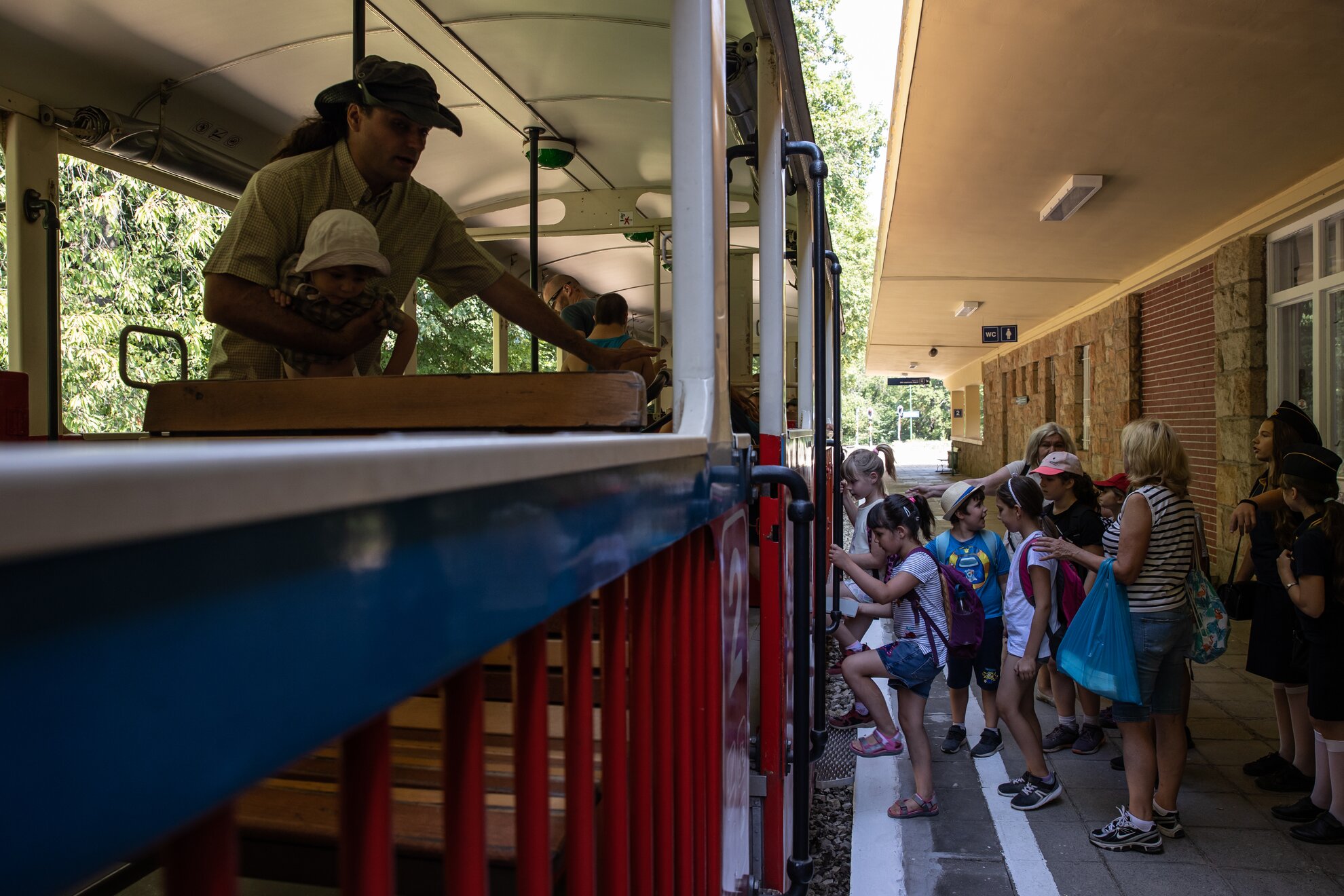
The nearest sight, though, is the grave of Mrs Tót, actually a woman whose name and nationality aren’t known. The corpse found in the woods in 1820, when the Swabians living here talked about a Totes Weib, 'a dead woman’, but non-German-speaking Hungarians translated the word as a popular Magyar surname, Tót. It has since become a popular rest stop for the many hikers who trek around Hűvösvölgy.
Hárs-hegy
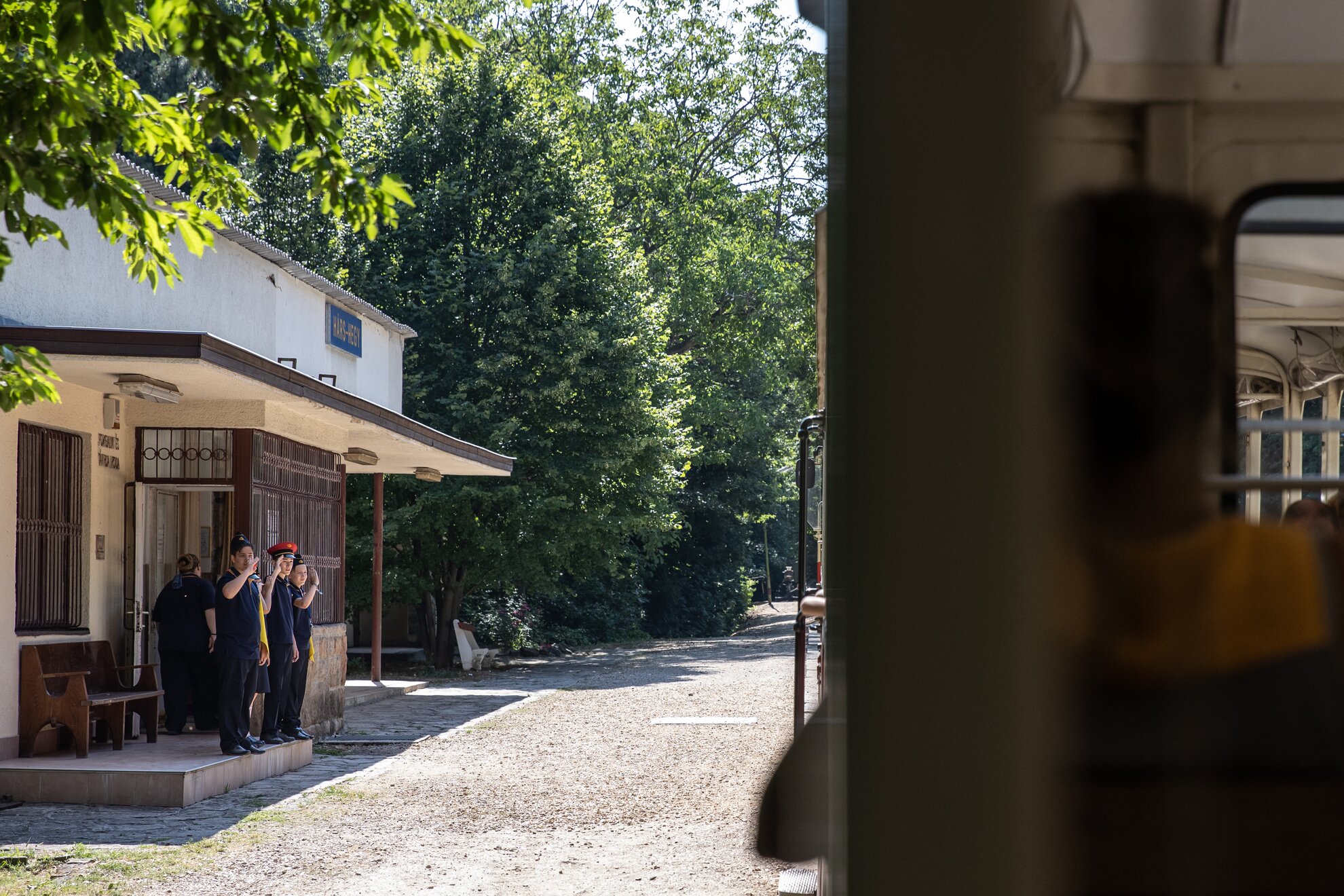
From the Hárs-hegy stop you can reach roughly the same destinations as from Hűvösvölgy, but it’s worth getting off the train for other reasons. We should also mention the 198-metre tunnel before the stop, which kids especially enjoy, particularly as the one of the young rail staff turns the lights on and off in the carriages, causing no little shouting and screaming.
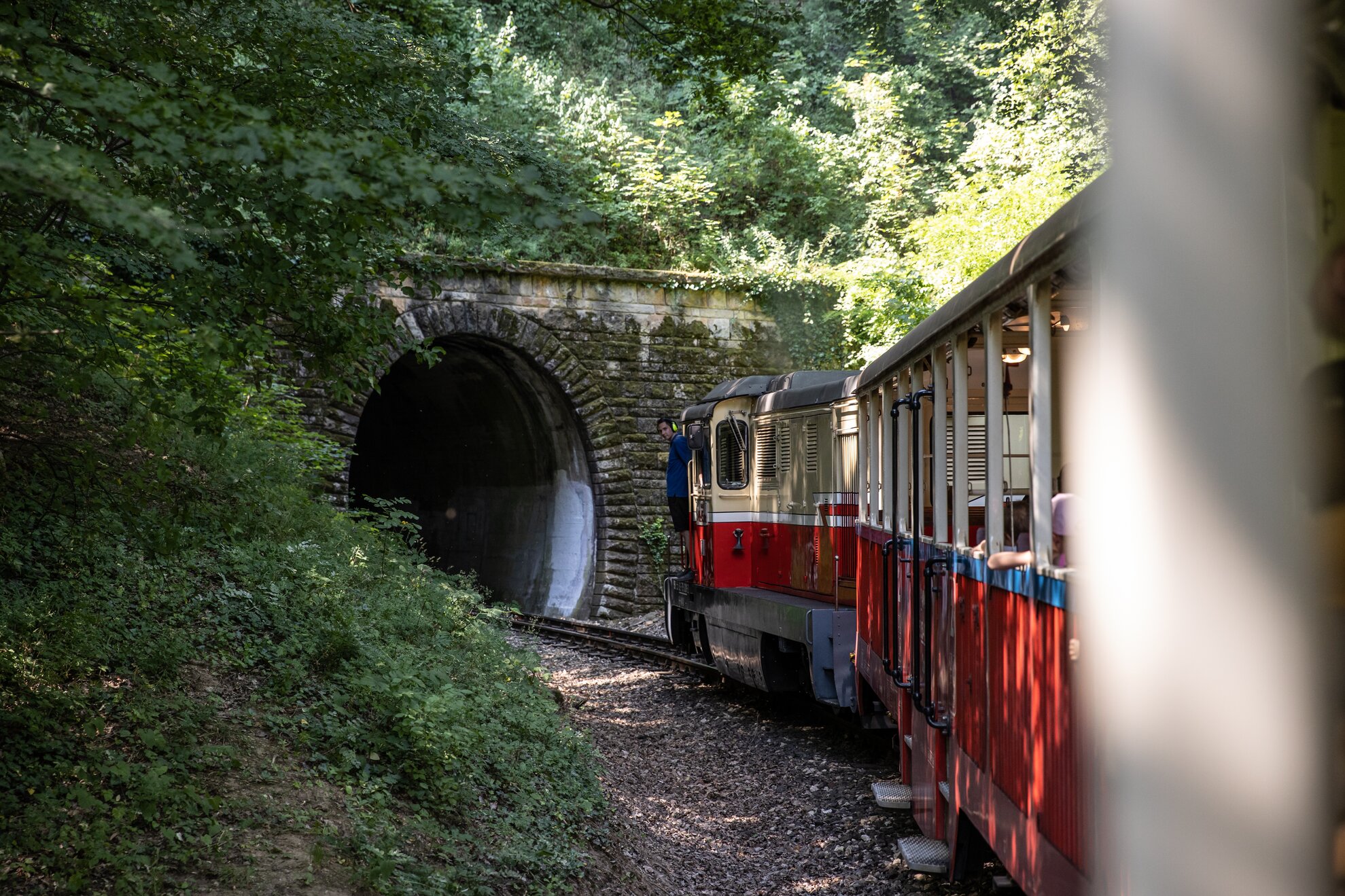
Arriving at Hárs-hegy, you can head in the direction of Kis-Hárs-hegy, atop which stands the wooden Imre Makovecz lookout tower. Just follow the yellow signs and after a narrow walk of a kilometre or so, you reach it.
Yellow signs also lead you to Bátori Cave, hidden beneath the top of Nagy-Hárs Hill. In the 16th century, László Bátori, a monk of the Pauline order, lived here as a hermit. His name is associated with early Hungarian literature concerning the Bible, but his other writings have survived, such as those about the lives of saints.
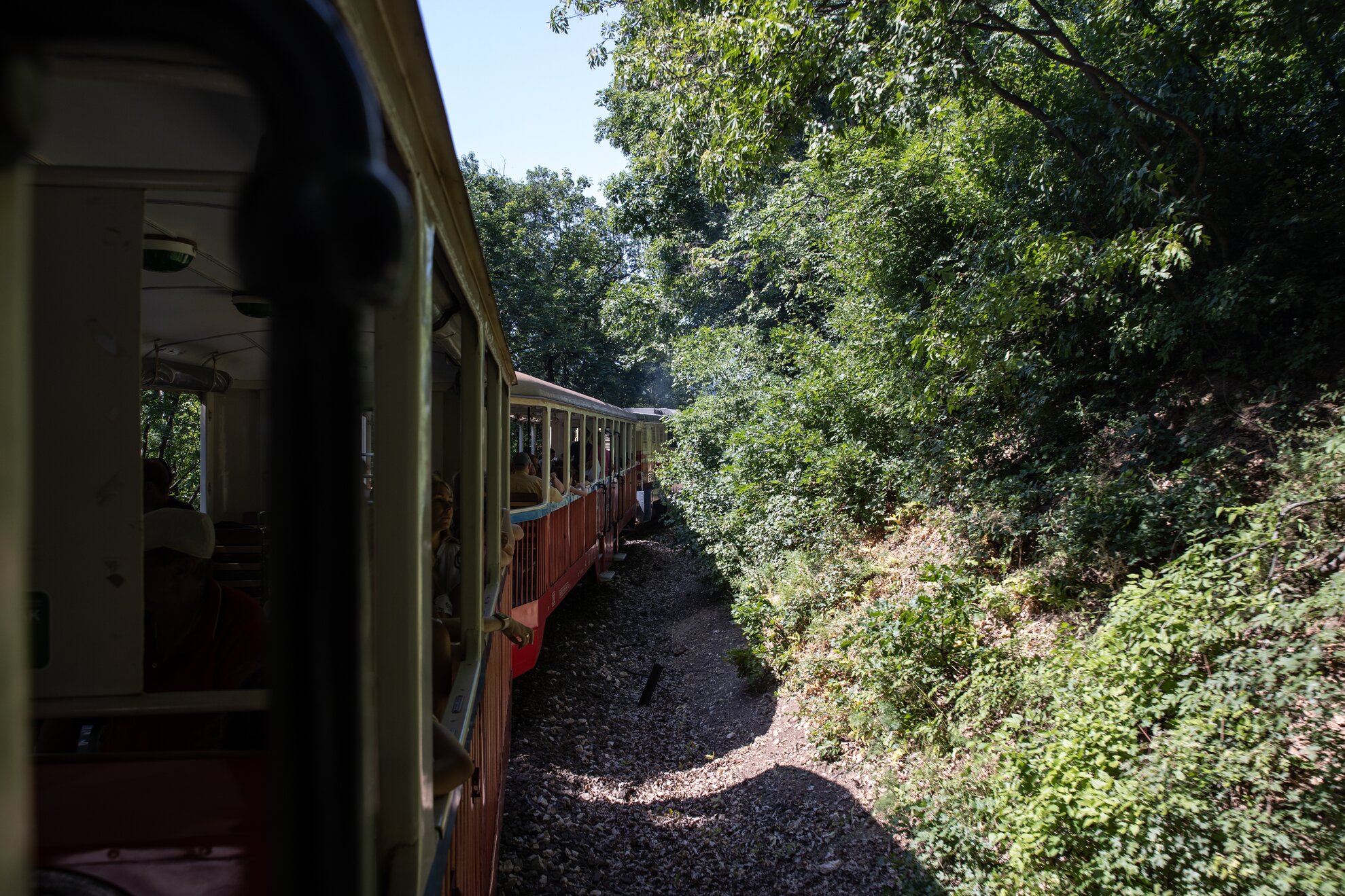
The cave was first excavated in the 1960s, with a number of finds from the Stone Age, Copper Age, Iron Age, Bronze Age and medieval eras. Currently, the cave is too dangerous to visit, although the deeper passages are said to contain beautiful crystals of sparkling colours.
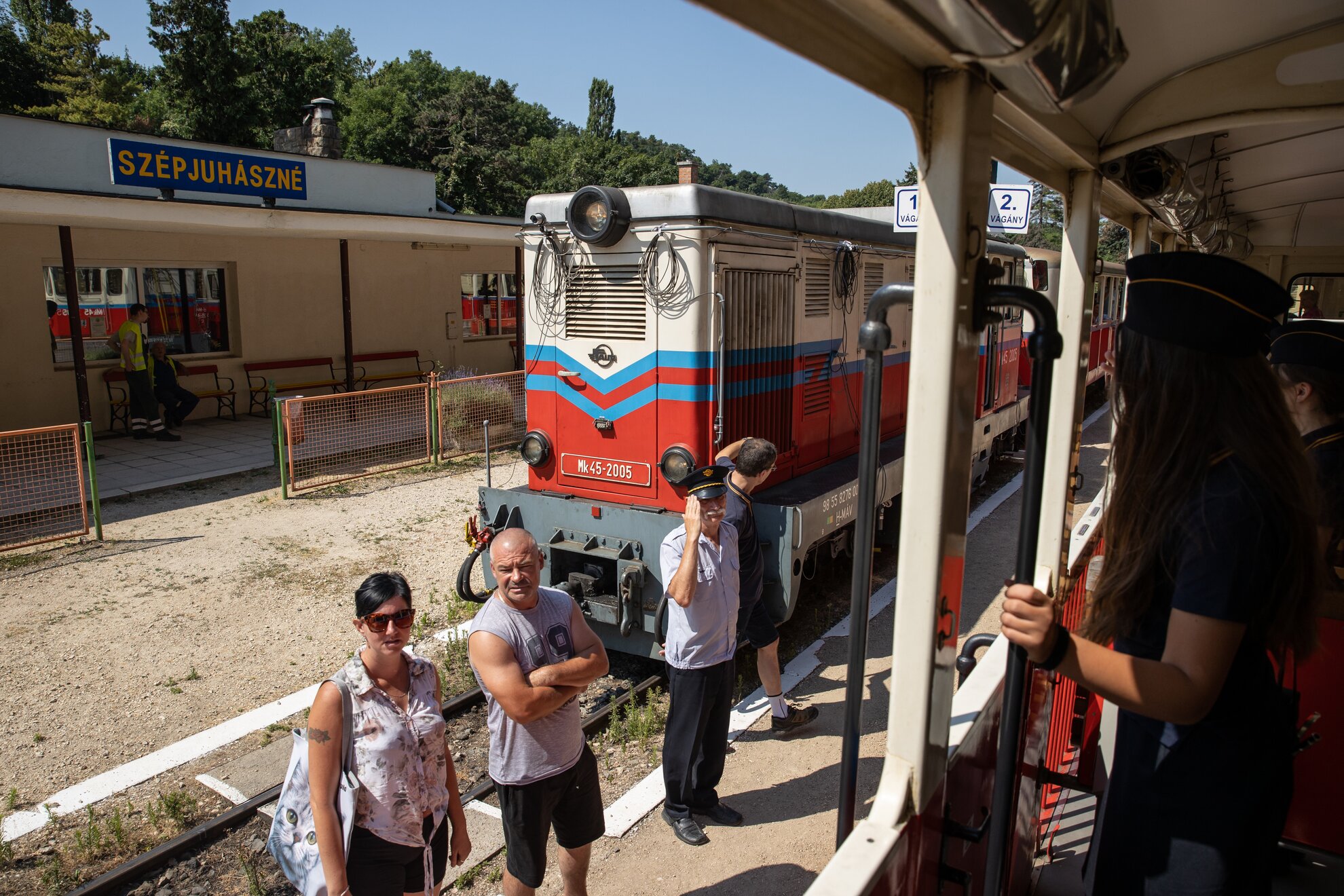
Szépjuhászné
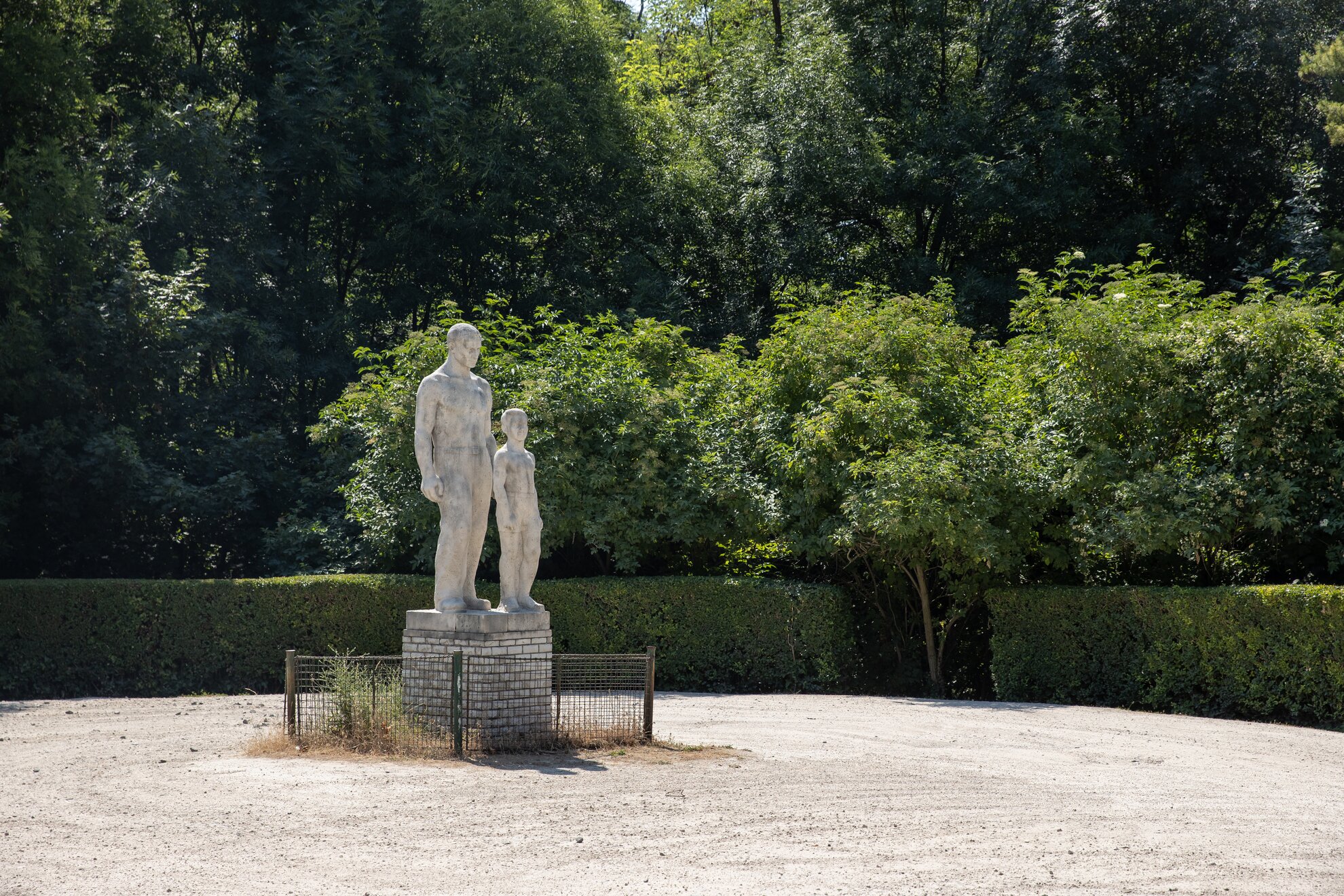
This stop offers the most attractions, which is why there’s a large station building, with a garden and car park next to it. Until the change of régime, the station was called Ságvári-liget. A statue of a man and boy is a hangover from this time, although no-one is quite sure who or what they represent.
A few minutes’ walk from the station, you find the ruins and memorial site of the former Pauline monastery of Budaszentlőrinc, dating from the 13th to the 14th centuries. It was built by Italian masters, and may have been a fairly stable structure because the Turks required a ten-day siege to demolish it. It was never rebuilt.
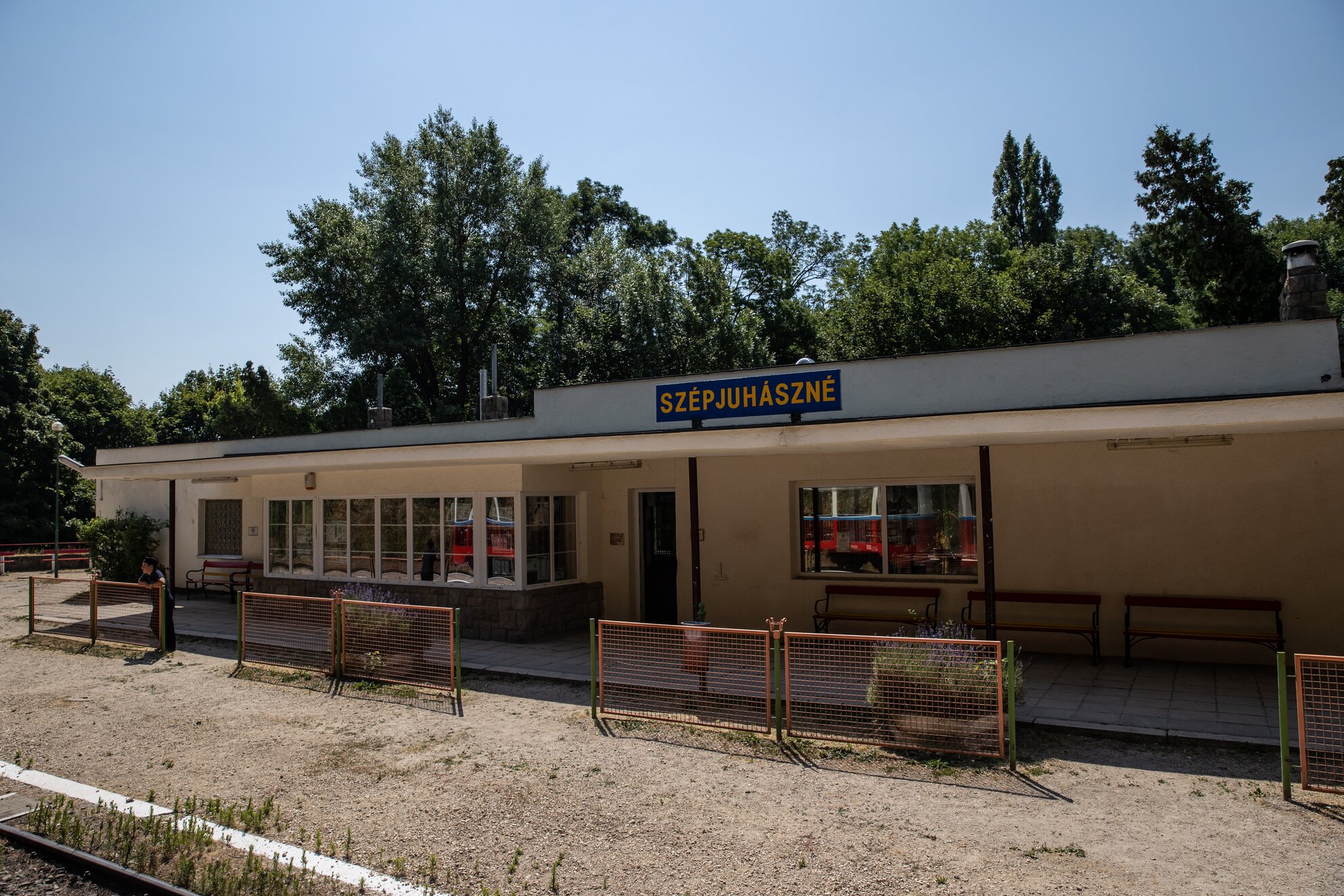
The Károly Kaán lookout tower at the top of Nagy-Hárs Hill stands a kilometre from Szépjuhászné station, following the yellow signs past the aforementioned Bátori Cave. Budakeszi Adventure Park can also be reached from Szépjuhászné, which is located near Budakeszi Wildlife Park, via bus 22 or a walk through the woods by Szilfa Clearing, a popular picnic destination.
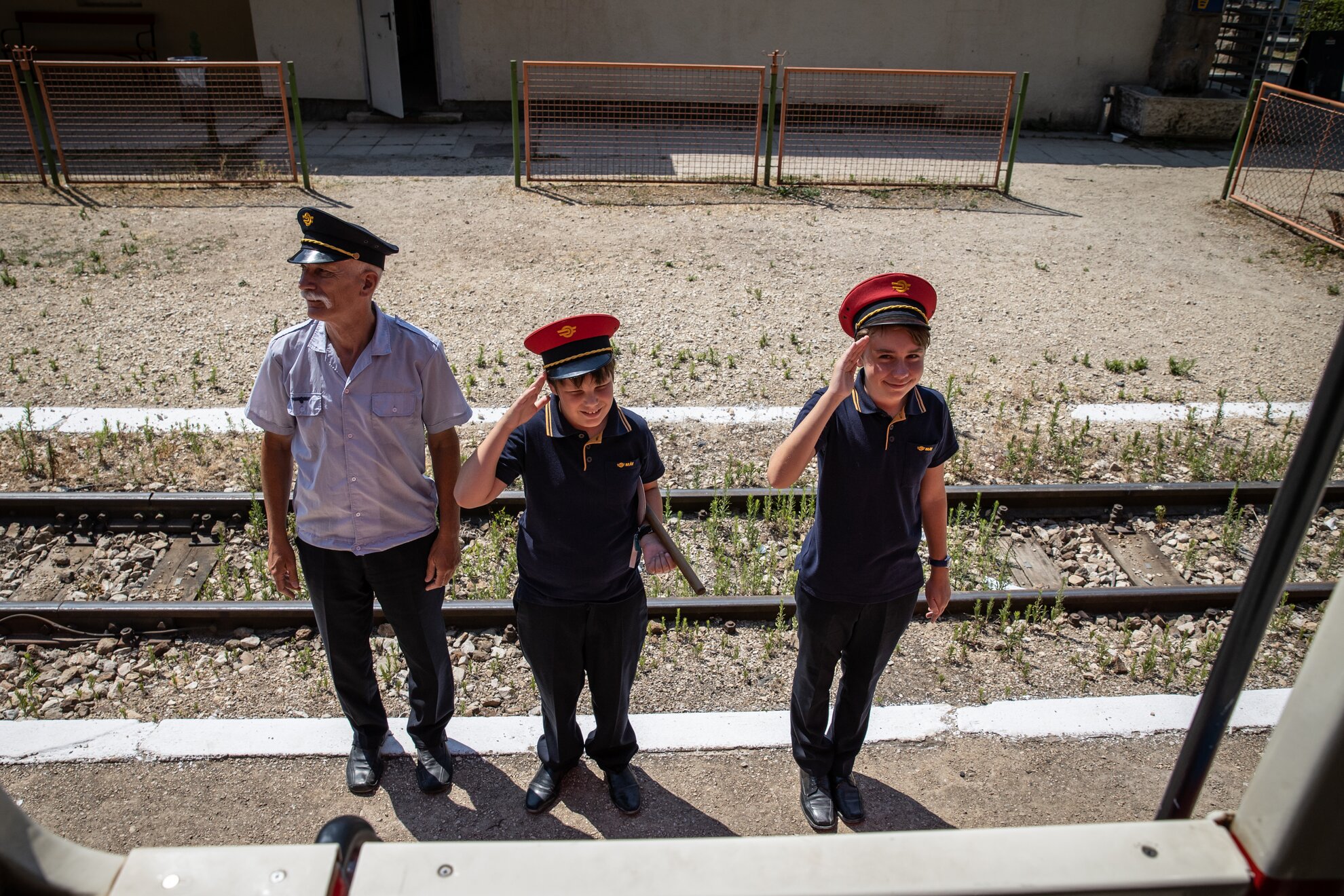
In fact, the Children’s Railway has a timetabled stop, Vadaspark, serving the Wildlife Park, but this is only for groups who request it beforehand. If you happen to be on such a train, you’ll reach these attractions faster.
Also from Szépjuhászné, green
signs lead to Tündér-szikla, 'Fairy Rock’, with an unparalleled panorama of
Budapest at the top.
János-hegy & Virágvölgy
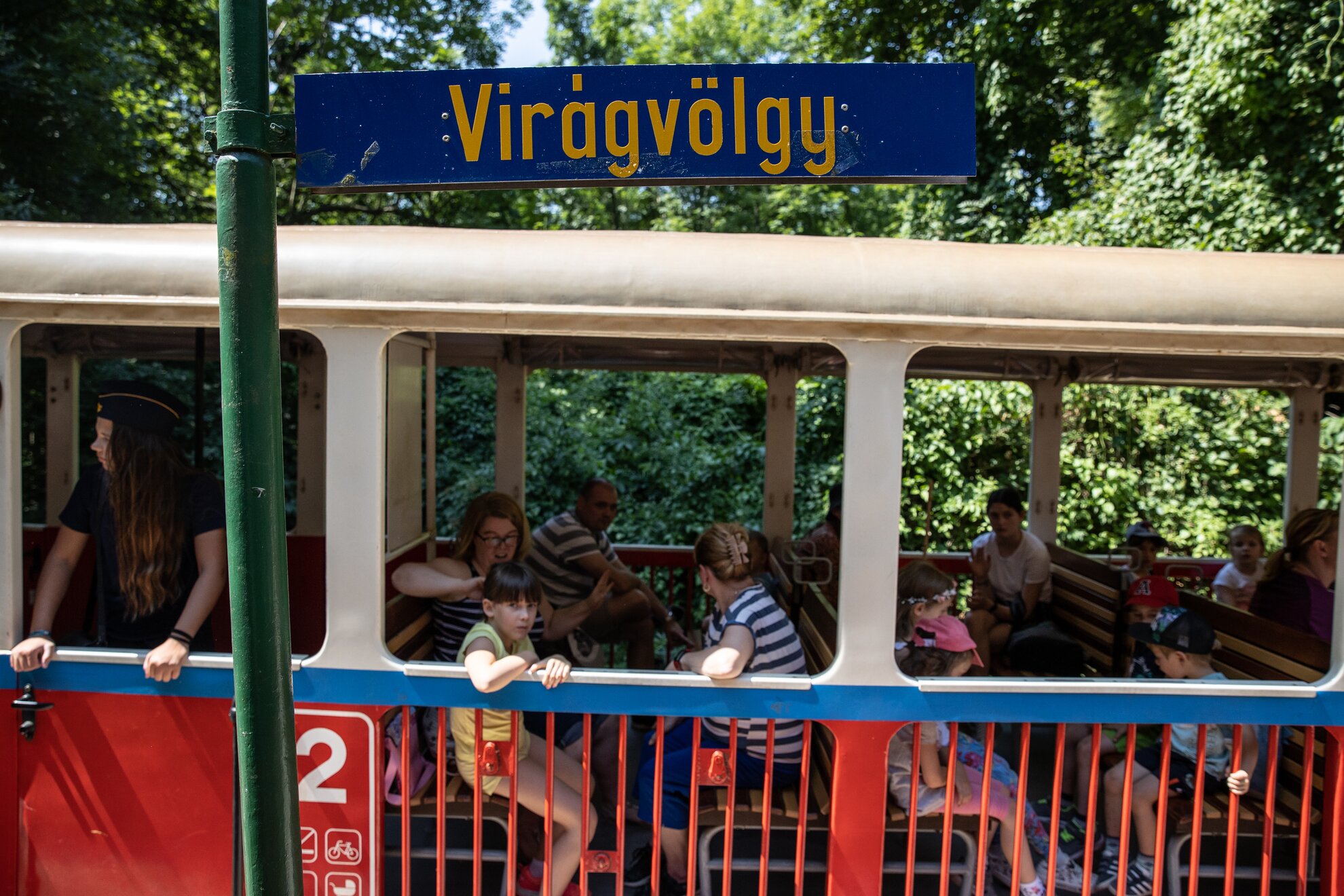
From these consecutive stops, the same attractions can be reached. First, there’s the Chairlift, whose János-hegy terminus is close to both stops, traversing a series of steps from János-hegy and a forest path from Virágvölgy. In summer, the Chairlift occasionally throws open its service until late at night for rides under the stars.
If you’re at the chairlift, you can also reach Elizabeth Lookout Tower, a Habsburg confection created by the same architect, Frigyes Schulek, behind the Fishermen’s Bastion. Its spiral staircase leads to the roof. On clear days, views reach as far as the High Tatras 80km away.
A lesser-known destination is Makkosmária. From János Hill, follow the red signs, from Virágvölgy, the forest path. Makkosmária is a huge meadow, a perfect hiking destination, which got its name from the fact that when the Turks came and burned down the chapel that once stood here, the locals rescued the image of the Virgin Mary (’Mária’) and hung it on a nearby oak tree.
Csillebérc

The old name for Csillebérc was Úttörőváros ('Pioneer City’), as it was an important stop on the line. This was the main gathering place for pioneers, the Communist scouting movement, the best students and athletes.
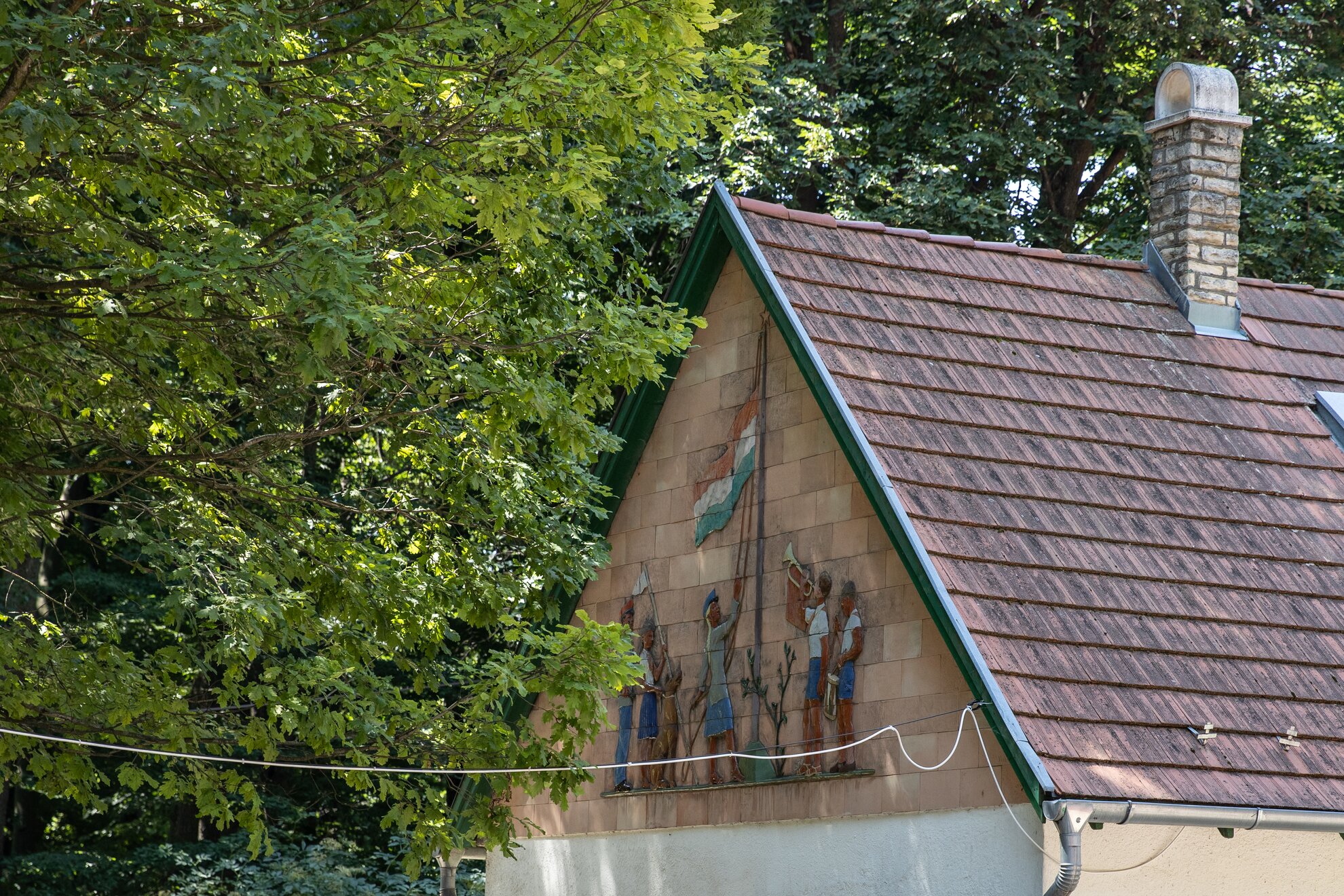
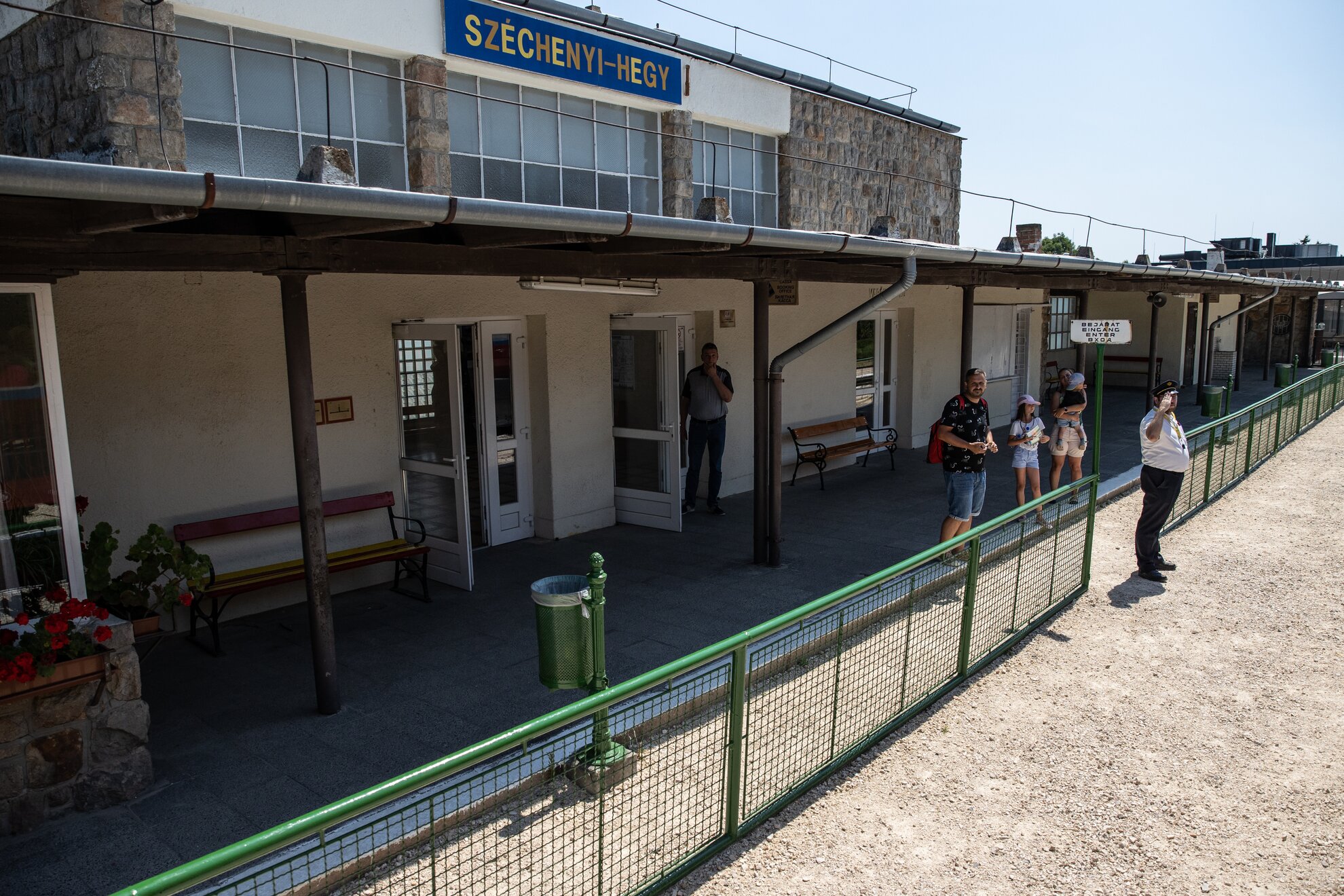
The site is currently home to the Csillebérc Children and Youth Centre, without the kudos of its predecessor. The Csillebérc stop is currently being renovated, but the railwaymen on the platform still do their job enthusiastically.
Normafa
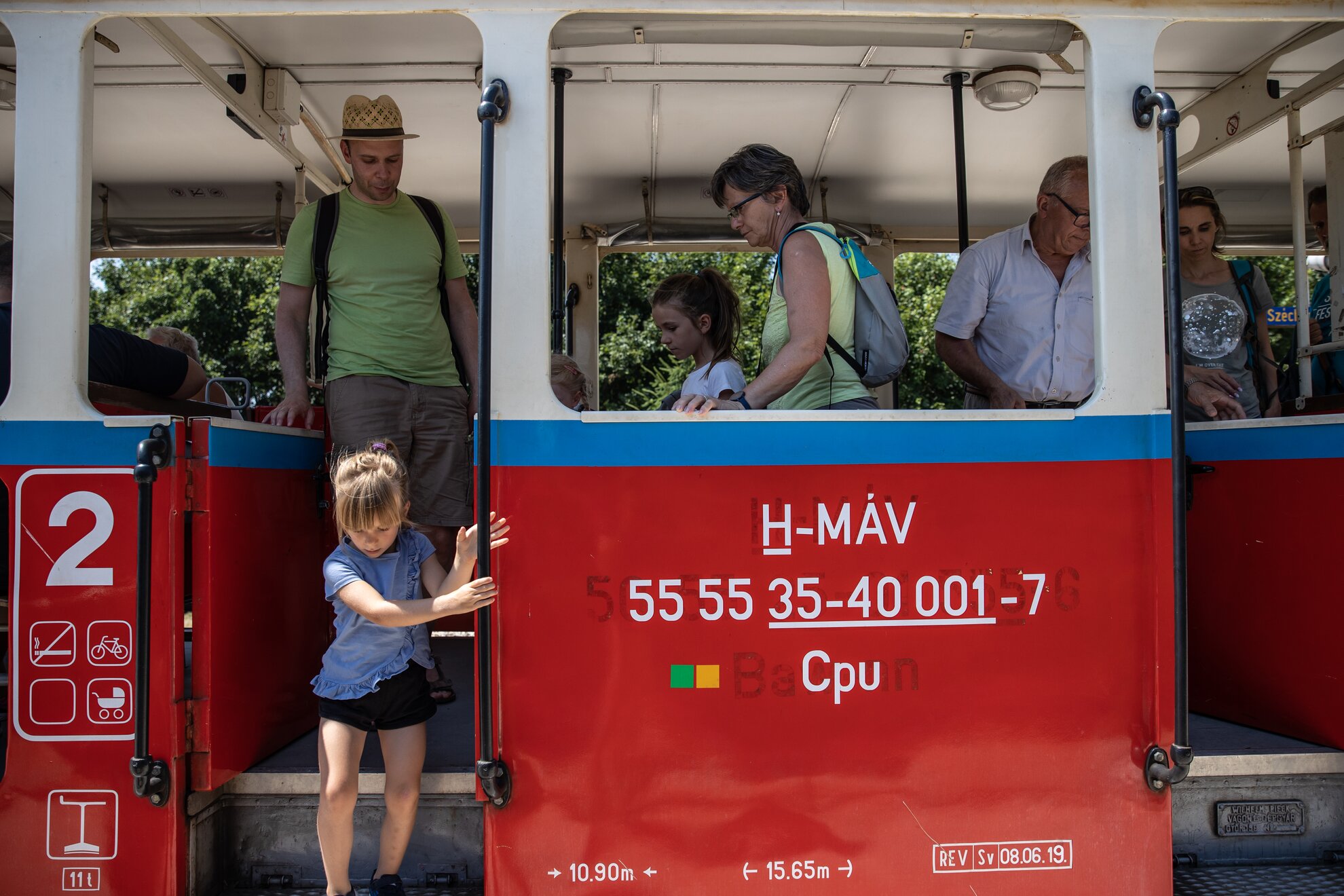
The Normafa stop differs from the others in that there is no station building here, the train just pulls to a halt all of a sudden. The original stop was a little lower and moved up to its current location because the Hotel Olimpia opened its doors here in 1972, and for some reason the Party leaders thought it would look good if the Pioneer Railway stopped next to it.
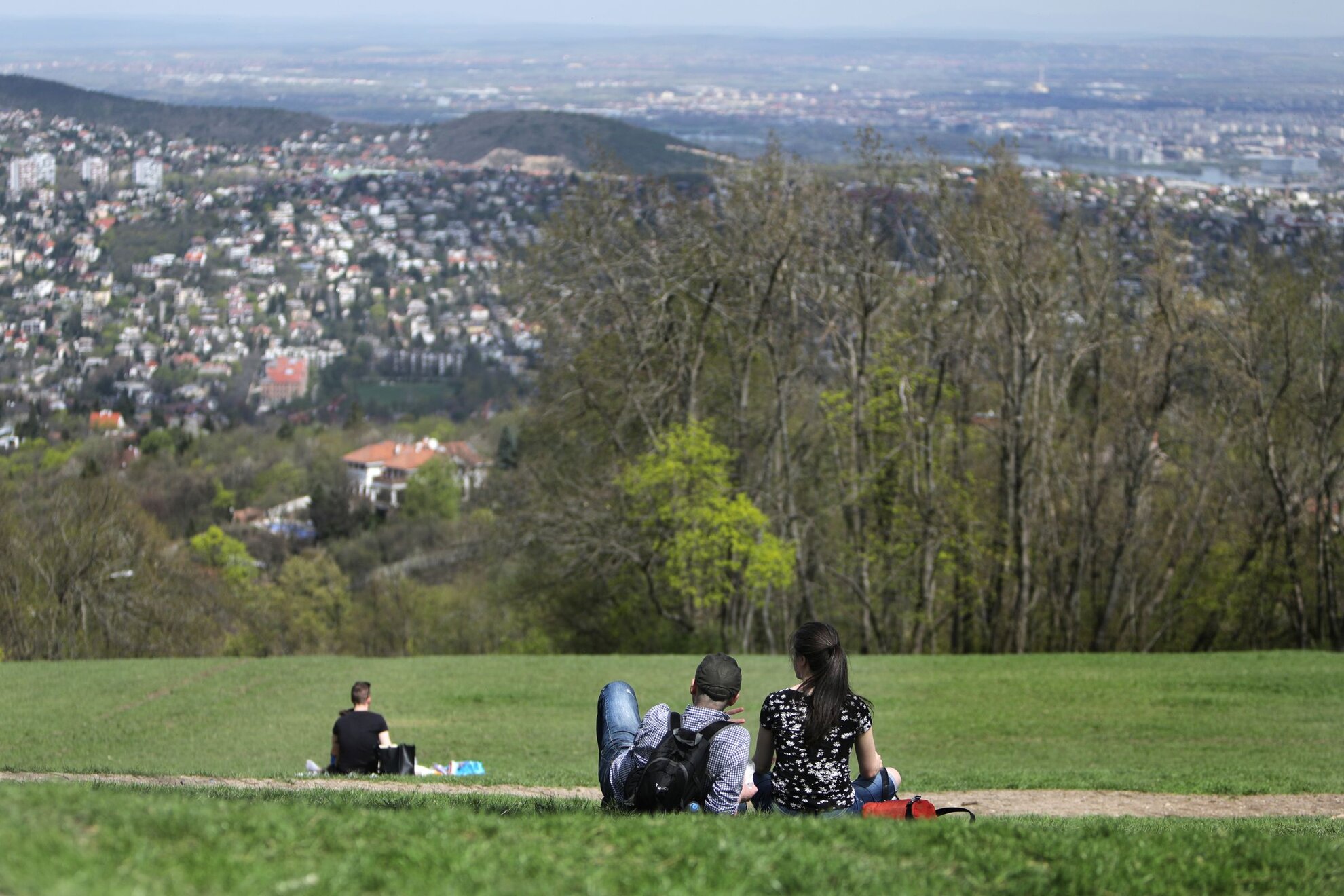
Of course, they didn’t think the hotel would be demolished one day, but the stop is in a good location where it is. Nearby, of course, is Normafa, Budapest’s main green getaway and one currently undergoing a major revamp, with a new playground and the transformation of the old Ski House into a modern grill restaurant.
Széchenyi-hegy
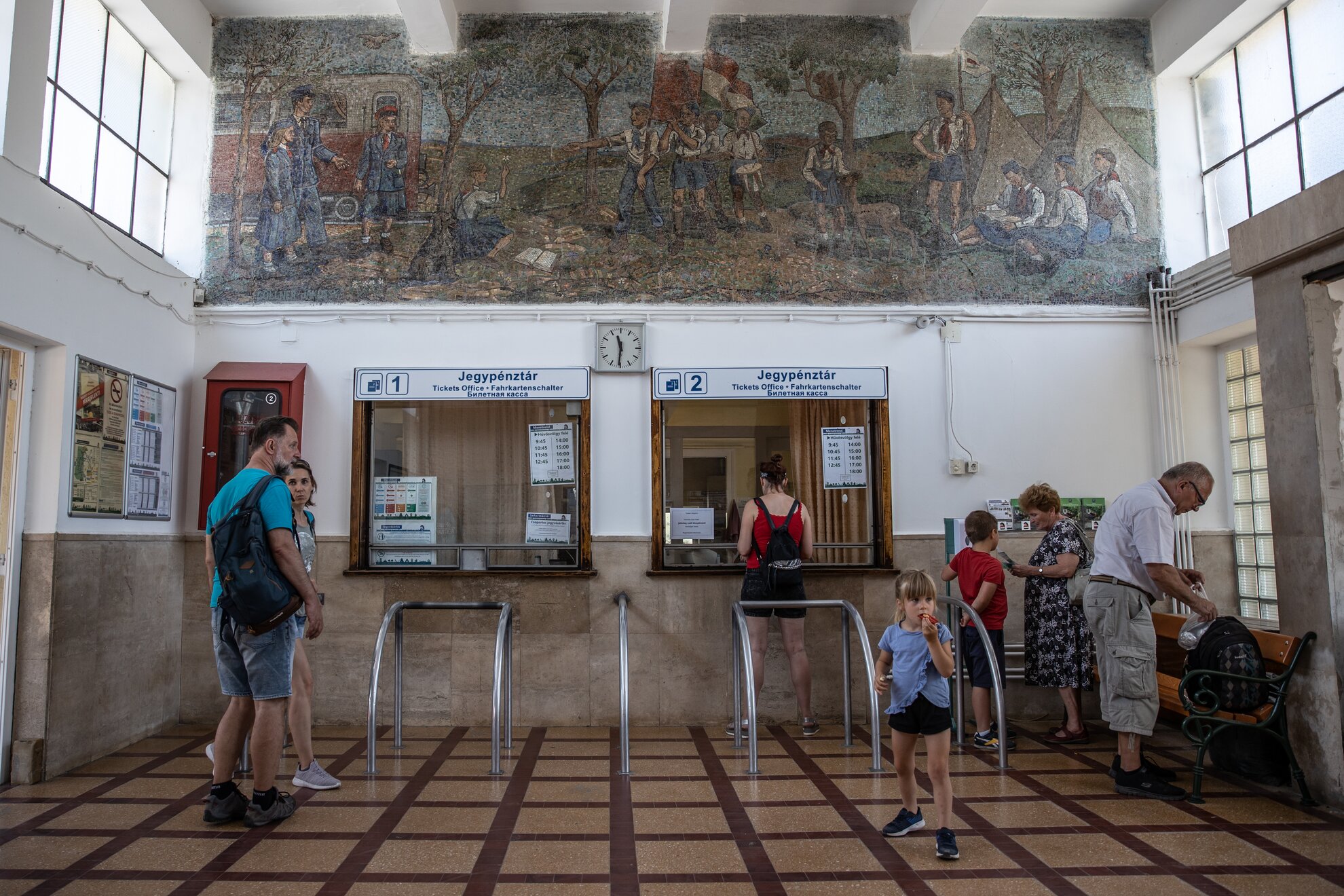
The southern terminus. This where construction began – Hűvösvölgy was completed by the very end, in 1951. It is worth popping into the waiting room – if not for your ticket back, then because of the monumental work of art above the windows. The multi-form mosaic, Táborozó úttörők ('Camping Pioneers’), by painters Miklós Göllner and Ferenc Jánossy, dates back to 1953, the composition of children, deers and flowers lending a somewhat surreal touch.
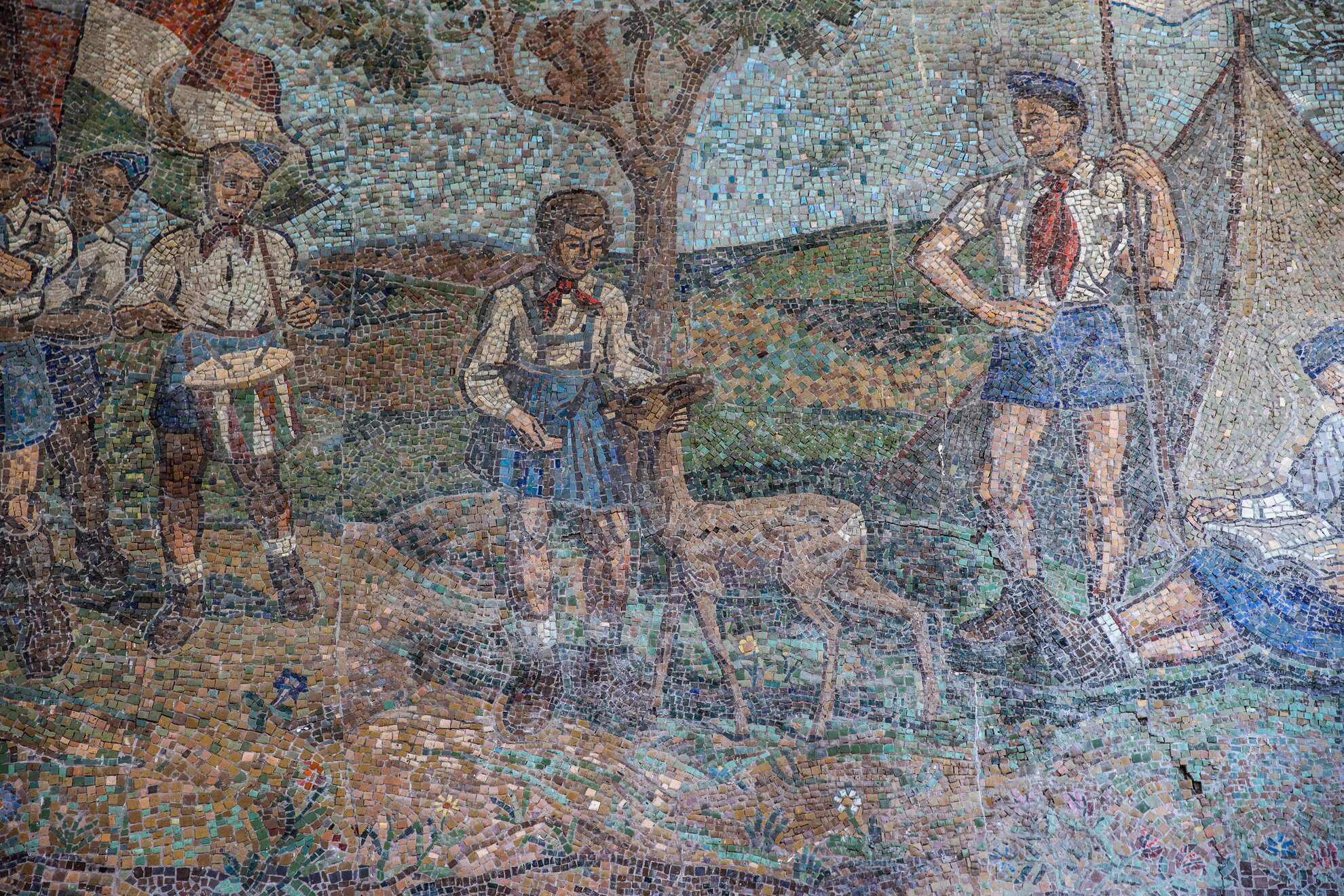
After Szépjuhászné, the Széchenyi-hegy stop offers the most interesting destinations. There is a transmission tower right next to the station, the most striking building in the Buda hills, its 60-metre structure and 192-metre antenna visible from miles around.
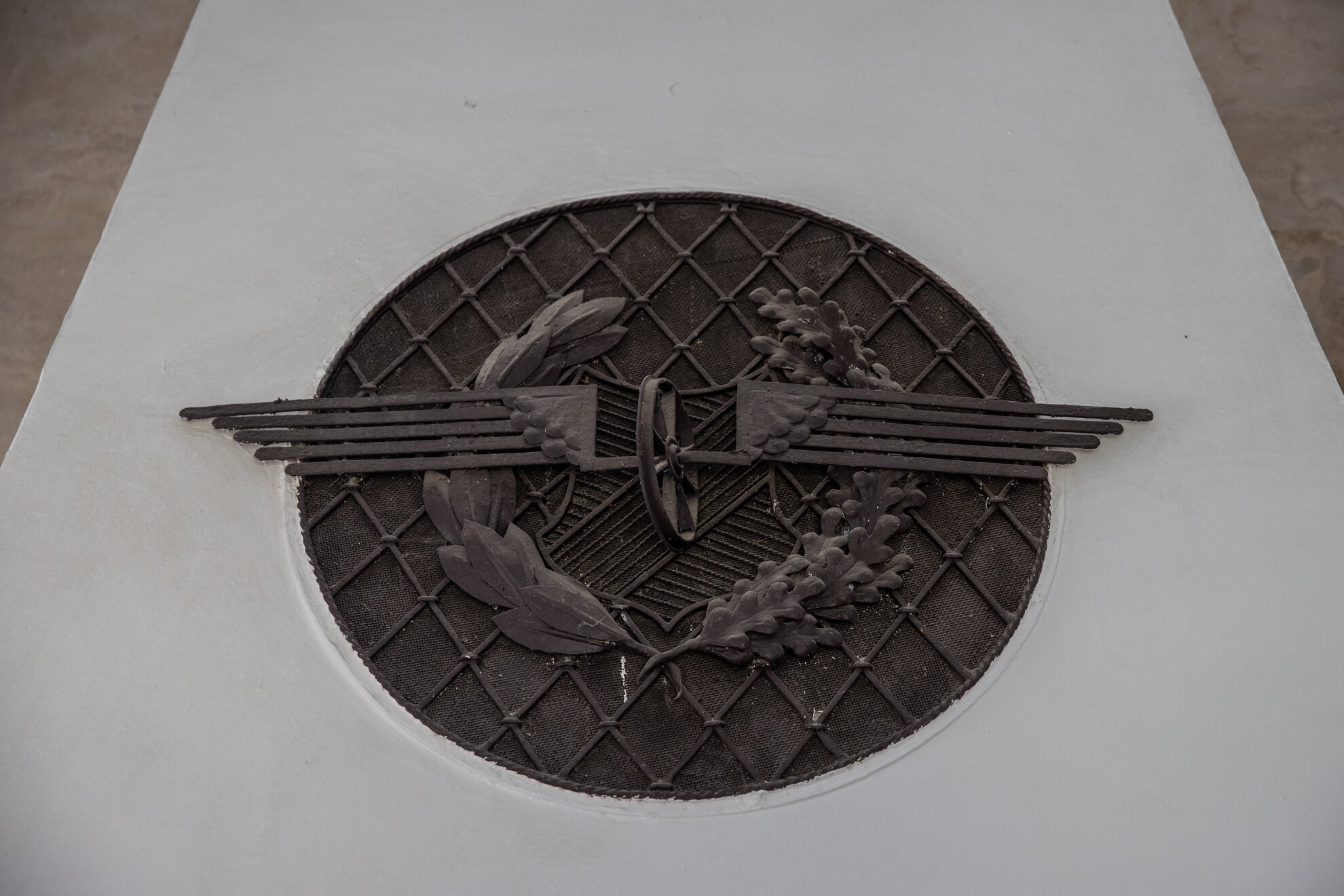
The forest path leads to the
Széchenyi monument, built after the death of the great statesman in 1860, and
to its companion lookout tower, designed by Miklós Ybl of Opera House fame.
Take
a deeper breath, and you can push on to Farkas-völgy (’Wolf Valley’), where you
find the Úti Madonna Chapel. It was built in 1880 by a Lutheran pastor next to
his villa, only for the building to deteriorate over time. It was renovated in
1998.
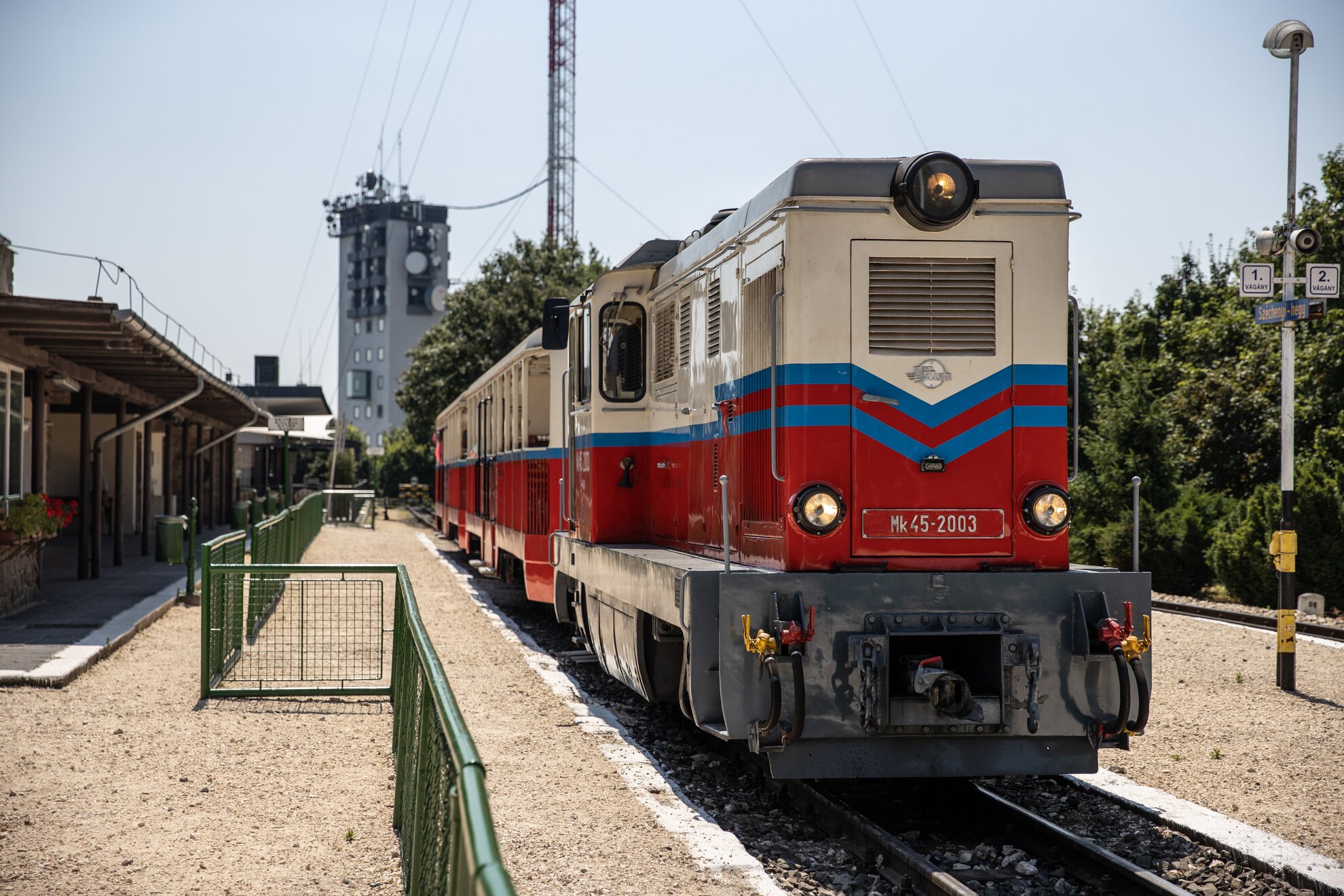
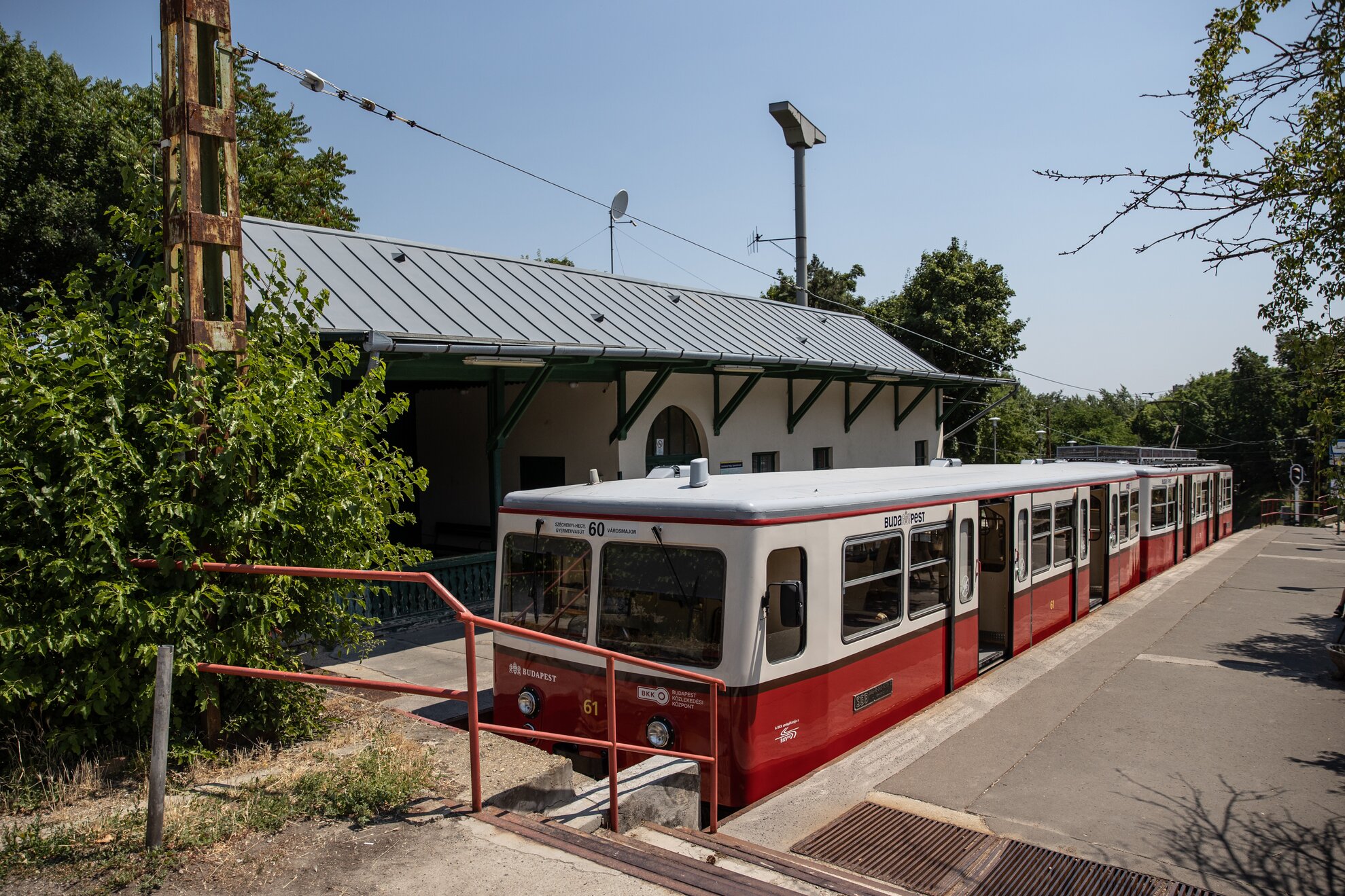
At the end of your journey, you can either come back with the Children’s Railway, or transfer onto the nearby Cogwheel Railway for another retro ride, this time to pretty Városmajor.
